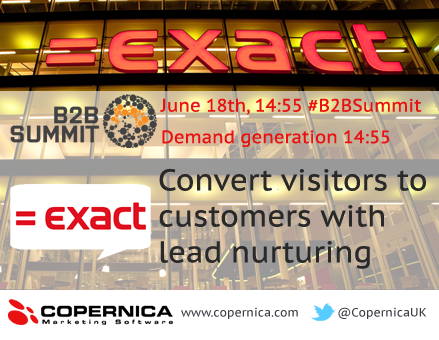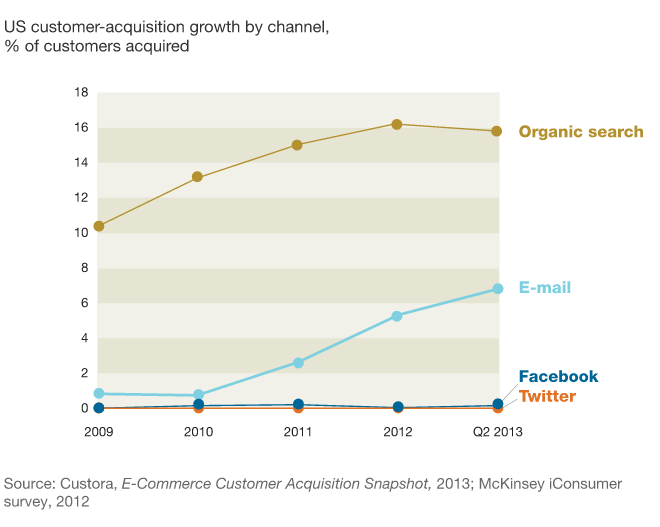3 ways that web shops are missing out on business
by Walter van der Scheer
Despite all their best efforts, e-commerce businesses can improve a lot on their share of wallet from their customers. Although usually there’s a good strategy to drive traffic to the site, the conversion rates and turnover from single customers are not as high as they can be. This article describes three common pitfalls made by e-commerce businesses all around the world. Find out if your business is getting the most out of its visitors!
The order process
First of all: the order process. A visitor has viewed products and took the effort of placing them in his basket. Did you know that over 66% of baskets get abandoned, and therefore only around 33% of shoppers make it through the order process?
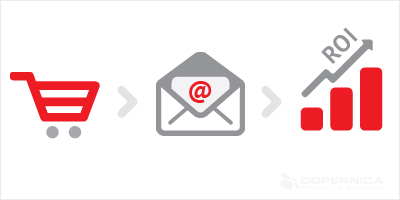
In our experience, abandoned cart rates vary highly depending on the type of product that is sold. Typical abandonment rates are 50% to 75%. And the more easy it is to compare your product (consumer electronics, fashion), the closer the abandonment rate will get to 75%.
In a recent pan-European study it was discovered that only 5% of e-commerce business currently have an abandoned basket strategy in place.
15 to 25% of people who receive a service-oriented mail within 24 hours after abandonment will continue to buy their products, so there is a quick win here.
Calculation example
Let’s say that your turnover is $50,000 a month, and your abandonment rate is 60%. In this case, the 50k turnover is only 40% of your potential. But by sending a reminder email, you could bring back 25% of the visitors that didn't checkout their basket. That’s an extra turnover of (($50,000/40%)60%)25% = $18,750 every month!
To do so, however, you will need an opt-in for all of these visitors. If you have no personal data of the visitors and no opt-in, you will not be able and not even allowed to follow-up.
Which brings us to the second hole in the pocket of e-commerce businesses: refraining from collecting data as soon as a web visitor gets in touch with your brand.
Identifying visitors
Smart Insights discovered that the average conversion rate from visit to sales is around 4% (and that the average conversion from visit to basket is 8%, so completely in line with the other research) . Since 2008, however, conversion rates have been dropping, until they stabilized at around 4%

So despite the best efforts, 96% of website visitors take off without any connection with your brand. These visitors might return someday, but why not stimulate this a bit?
A good way to create a first careful relationship is to engage via social media with a client. Liking and following is a non-intrusive and easy way to keep in touch. For business owners today, there are various applications available to extract data from a social media platform. Examples of integrations are test panels, news archives and update your profile pages.
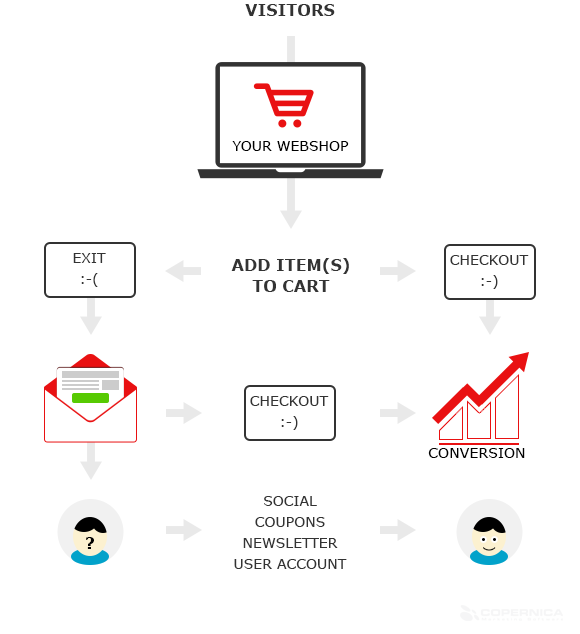
A need to leave details, like email addresses, can also be added to your site. Try browsing Twitter, Linkedin or Groupon without a login for example. Offering a reward increases the number of sign-ups. One of the latest innovations from Bing.com to fend of Google as the #1 search engine is Bing Rewards, a reward scheme for searching with Bing.
If you own bricks-and-mortars stores, offering e-coupons might prove to be very successful. We’ve seen scan rates on personalized discount coupons in loyalty programs of over 60%!
Lastly, let’s not forget to mention the ugly duckling of identifying visitors: newsletter subscription forms. Besides collecting opt-ins on every form on your site, also make sure to publish a subscription form in the header or footer of your site or alternatively, in the sidebar.
Customer retention
Perhaps overlooked because you might simply find it unimaginable; the third ‘window-left-wide-open’ is the one of customer retention. The sleeping beauties who have bought with you before, but have not checked back in for a while.
Building on the calculation example we mentioned earlier, the real ROI will come from timely and relevant communication after the first order. When you’re able to keep this newly acquired customers engaged with your brand, the potential is way bigger and marketing costs a lot lower.
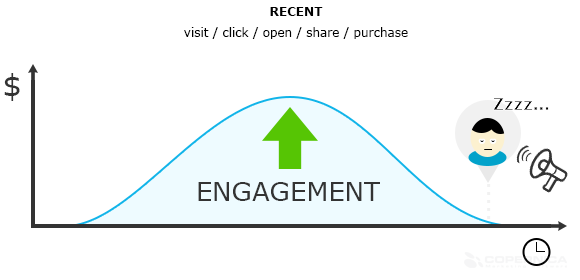
Do you know how many of your historical clients are still active today? How do you measure that?
A recency, frequency, monetary value model is a very good way of spotting the clients whose eye-lids are slowly closing. Wake them up, before they go to sleep!
A hotel chain for example applies the RFM model by looking at the most recent date of booking, total number of bookings of this client and the total lifetime turnover of the customer and calculates this into a score.
Engagement can also be measured by someone's activity: besides purchases this can also be recent website visits, recent behavior with email newsletters and recent social shares. All of these activities can be drilled down into a score by applying some basic lead scoring techniques.
Closing thoughts
With paid traffic bringing in a conversion of only 4%, the second half of conversion starts the moment someone arrives at your site. Improve customer value by collecting visitor data with a sign-up form, social integrations and loyalty programs, following up on abandoned baskets and keeping customers engaged. And finally: predict and win-back your customers when they are not active any more.
Interested in learning more about these marketing tactics? Sign up for a free account today and learn how to apply them directly!



